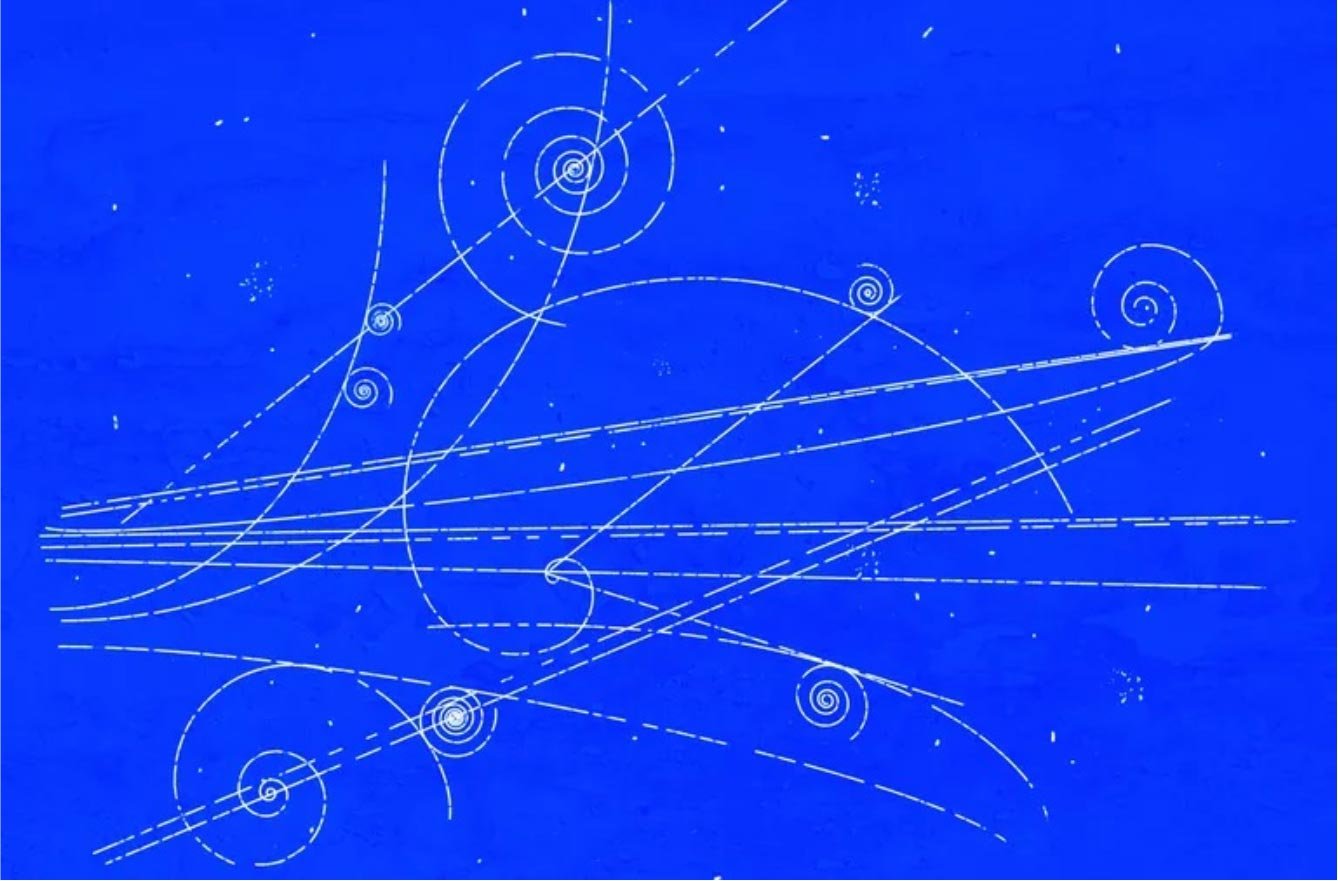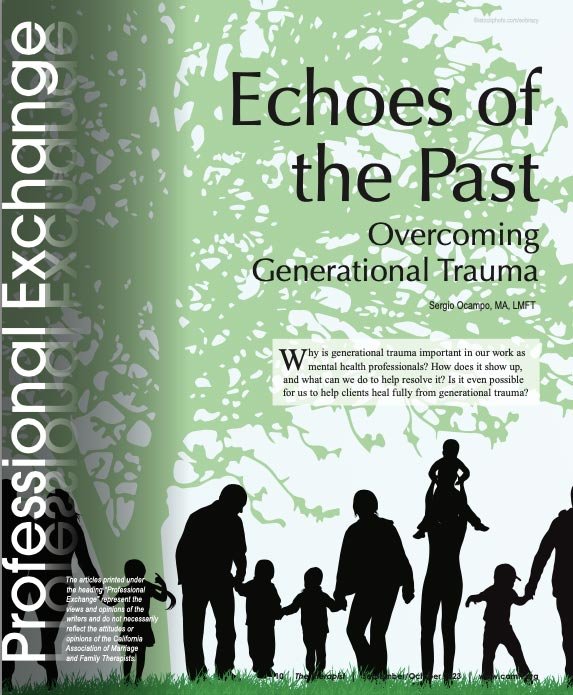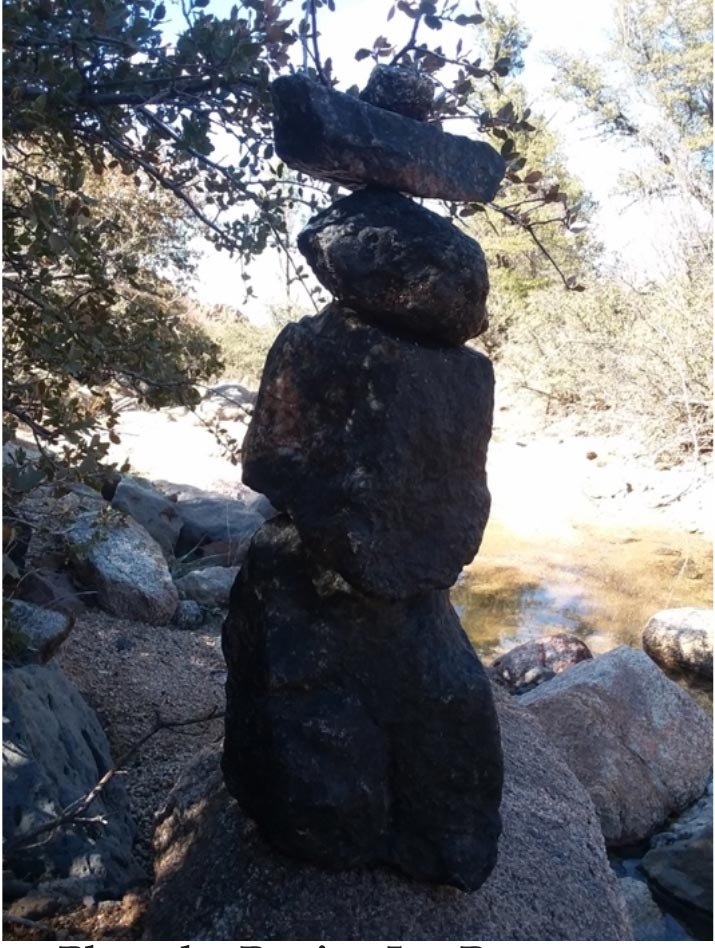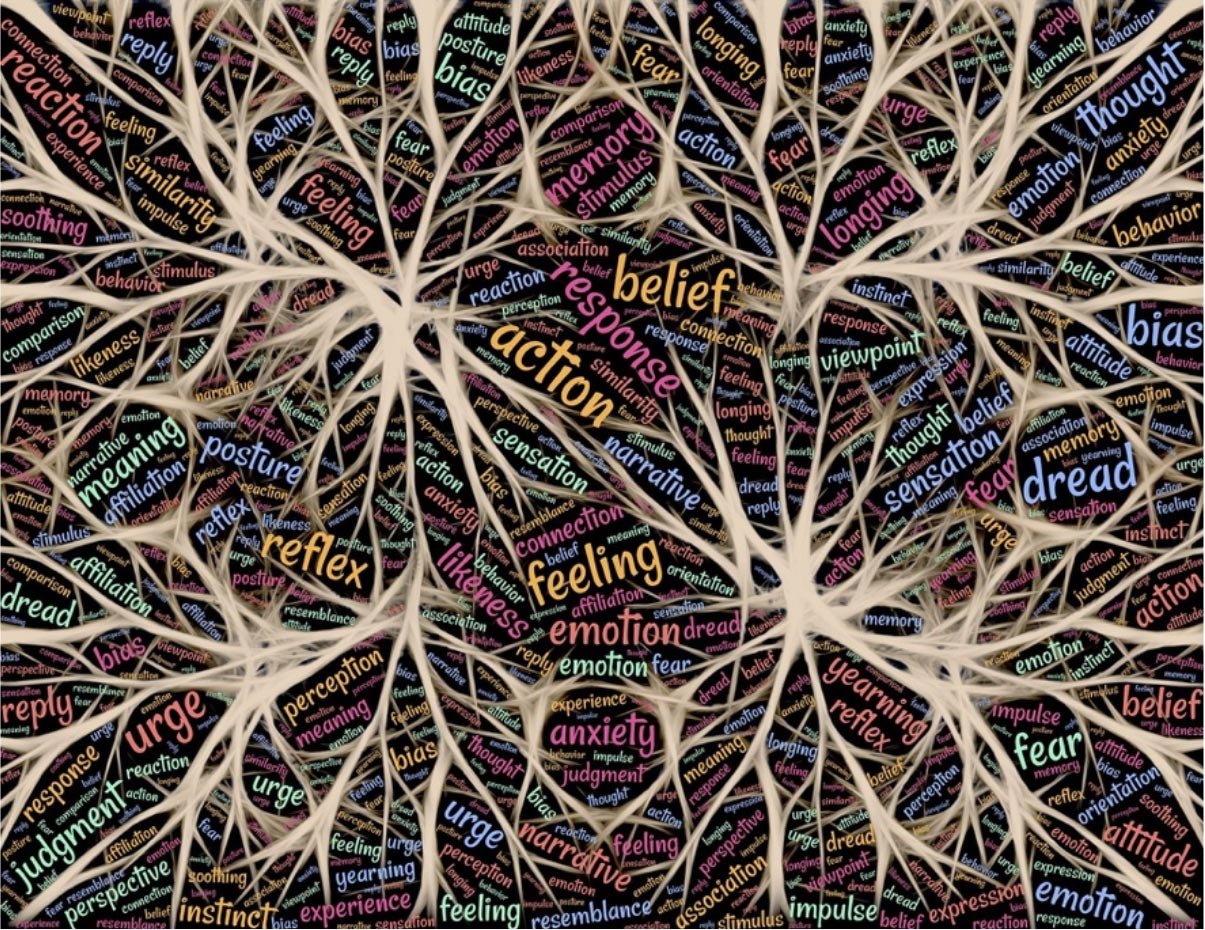This ongoing series of articles is dedicated to the genius of Dr. Arthur Lincoln Pauls, D.O., who inspired me to find my own interpretation of this work. There may be many points of view on the principles of Phase 7. These articles represent my views on Phase 7, and I present them here as possibilities, among many, to consider.
This is not a Phase 7 class, but is my offering on how to enhance Phase 7 practice and life in general. If you have not taken a Phase 7 class, you might consider taking one from a qualified instructor. Until then, you can use this as a stand-alone concept and technique if it resonates with you. If you have taken Phase 7, you might consider this concept as you practice Phase 7 and as you live your life. I offer it here because it has drastically improved my life in very tangible ways. My past articles are: A Spiral a Day Keeps the Doctor Away: Part 1: Imagery (vol. 4/17), Part 2: Connection (vol. 8/17), and Part 3: Essence (vol. 4/18.) They all represent foundational skills that I deemed were part of Dr. Pauls’ amazing ability to hone in on what was needed very quickly and promote a positive change with the least amount of effort. From my point of view, Dr. Pauls’ effortlessness was the product of much hard work. I call this type of work front-loading – effort up front so it can be effortless later.
Adding Part 4: Seeing Multiple Points of View, I present one of the most important foundational skills for facilitative healing work of all kinds that also has profound implications for helping to heal larger social systems – families, groups, organizations, societies, and global relationships. In fact, the survival of our species may depend on this principle. But the true spirit of this and of all these articles is in promoting Phase 7 principles for practitioner health and wellbeing.
I can attest, with my 36 years experience with Ortho-Bionomy and my 21 years in the mental health field that 1) being observant, 2) using imagery, 3) making connection a priority, 4) see people in their essence, and 5) seeing multiple points of view have all made me healthier.
Seeing multiple points of view is both a philosophy and a technique that I have embraced from extensive studies of Buddhism, modern psychology, Focusing, Somatic Experiencing, Mindfulness, and the brilliance of Dr. Pauls and other Ortho- Bionomy instructors. I had to learn all these methods and unlearn a lot of my old habits to finally understand some of what Dr. Pauls was trying to convey so many years ago with his allegoric storytelling and deep metaphors. Using the multiple- viewpoint method offered in this article has improved my Phase 7 ability, advanced my personal and professional relationships, and raised my happiness set point.
If we don’t know what it’s like to see the world through the eyes of another person, we don’t know that person at all. We only know our own view.
When I take my morning awareness walks in my neighborhood, I have taken to doing some of my hand exercises while I walk. This is my morning attunement meditation and always brings me in greater touch with my environment and myself. One day as I walked, I noticed an older man hunched over with a rake in one hand and shovel in the other. He was painstakingly raking a single leaf at a time into the shovel and lifting the shoveled leaf into a plastic bucket. The whole thing looked ridiculous to me, because his lawn was near perfect, to begin with, and it was only a brief matter of time until leaves from the surrounding trees would fall back on the lawn. My belief system said, “cleaning up a lawn once a week is correct,” and “his approach is incorrect.” My mind performed this assessment and judgment automatically without even consulting with me, and I held it as my truth in an instant and felt justified.
I continued to observe the man raking the leaves in the same way for several weeks. I found myself writing him off and trying to ignore what I deemed an irrelevant waste of time. There was a subtle discontentment growing in me. I found my self- awareness and presence turning into distraction and disconnection. My walks became less enjoyable. Then one day, I saw his ritual in a different way. I had no judgment about it as being good or bad. I just saw it, and seeing it in that way brought me back in touch with myself. I felt better in my body. But the real surprise came to me when I looped around the block and saw his lawn one more time. He was gone, and the lawn was completely free of leaves. In that sublime moment, I saw the lawn from his point of view. I felt a greater sense of expansion in my body. I still don’t agree with his point of view, but I could see how a pristine lawn might make sense to him. I was no longer judging his actions, which made me feel even better. I also had the thought that I could have looked equally ridiculous to him, walking around the block repeatedly with my sun-visor on and moving my fingers and hands as I walked. My walking ritual has profound meaning to me, as his grass-cleaning ritual must have to him. The end result of all this was that my mind expanded by embracing an alternate point of view, and I didn’t even have to agree with his point of view. I only needed to know that it made sense to him.
This brain-expansion process has profound implications for the longevity of the brain. One of the major causes of age-related cognitive decline is not learning new things as we age. As far as our social life and related thinking behavior is concerned, thinking the same thoughts (i.e., our point of view) repeatedly in social interactions, and thus running the same neural pathways, does not challenge our brains to create new neural pathways. Defaulting to our familiar thoughts and opinions exclusively when we interact with others or think about others or think about ourselves contributes to neural atrophy – much like being sedentary can lead to physical atrophy. Social engagement and appreciating differences in others force us to create new neural pathways as we try to make sense of each other’s points of view. This is why my brain felt like it was expanding after the fact. I was having new thoughts, stimulating different neural pathways, and possibly making new neurons by taking my mind to the social gym. And I wasn’t even verbally interacting in this example.
I picked a small, everyday occurrence with no direct interaction to show how common it is to judge people unconsciously. I also feel it is best to start this process with smaller, less charged issues and work up to more challenging issues with family, friends, co-workers, and associates. I like to practice Phase 7 techniques every day as I live my life without taking any extra time. One more encouraging fact about learning this skill is that we will always have opportunities to practice because our point of view will always be different in some way than others’ points of view, even if we are not in conflict or seem to be agreeing.
What does all this have to do with Phase 7?
As I shared in Part 2 of this series, finding true connection is the key to accessing what Carl Jung called “the collective unconscious,” which is a universal psychic space we all share in our collective deep mind. It is impossible to establish a connection with that which we do not understand. If we are judging something or someone as objectively wrong, we don’t understand the person or the related subject matter with enough detail to be accurate witnesses. Unable to embrace a different point of view, we are left in the dark and sacrifice our ability to see and affect things at a distance. Embracing another’s point of view as a valid viewpoint makes us accurate seers and sets up the conduit for Phase 7 to work. In other words, one cannot successfully perform Phase 7 with someone whom they are judging, because there is no accurate witnessing, and thus, no connection.
Seeing people accurately at a distance can help them to self-correct more successfully than trying to send them something positive of our own design.
Seeing people accurately at a distance can help them to self-correct more successfully than trying to send them something positive of our own design. It could be that people self-correct when they are accurately seen with no judgment because, in the process of being seen this way, unproductive aspects that were previously hidden are recognized with zero resistance. This paradoxical theory of change represents the very foundations of Ortho-Bionomy and succinctly expresses what I feel Dr. Pauls was trying to teach us with his unconventional methods.
Facilitating self-recognition, self-responsibility, and self-correction in our clients and ourselves is the basis of effective Phase 7, whether in person or at a distance. With this in mind, Phase 7 principles have profound implications for conflict resolution, which is the greatest challenge in all our personal, professional, and organizational relationships – also in larger social contexts, such as national politics and international diplomacy. From interpersonal to global conflict, the Phase 7 process is the same: what we can see accurately without judging, we can help to auto-correct, and new solutions can emerge. Only seeing our side always results in the strife of gridlock or the deadness of resignation. Seeing things accurately without judging them is also a form of radical acceptance. The universe operates on a radical acceptance principle, in that resisting the fundamental workings of the universe is futile. Seeing anything accurately and accepting it exactly as it brings us into harmony with the universe. We can then facilitate a positive evolutionary process; rather than direct the universe, we participate with it. Radical acceptance is the price we pay for that privilege. All things evolve and move forward, one way or another. Radical acceptance, combined with the focus and specificity of Phase 7 can help things to evolve more fortuitously.
Seeing multiple points of view is a vital form of self-care.
Remember the man raking up one leaf at a time? What motivated me to appreciate his point of view was not moralistic. It was my self-corrective response to end my suffering because I realized that my judgments of him were the culprit. Recognition of “dis-ease” creates a motive to change; Dr. Pauls referred to this process on countless occasions. If we fail to recognize what we are doing to create our own suffering, we certainly can do nothing to alleviate it, and we are forced to attribute our suffering to circumstances outside of ourselves. This false attribution is the genesis of all misplaced blame and unresolvable conflict. It also is the cause of great misery and loss of health. If a strong point of view is causing suffering, as mine has caused me on countless occasions, it could be that the situation is being seen only through one point of view. I can attest that this is a trap that will only lead to more suffering and unsuccessful outcomes.
Psychological freedom in relationships comes from knowing that we can disagree and still understand each other’s points of view. Only then can new alliances be made and new solutions be found that were previously invisible.
Practitioners of Ortho-Bionomy may be using advanced empathy in their practices and not in their personal lives.
This was certainly true for me until I figured out how to put Phase 7 principles into everyday practice. If the above statement is true for you too, the good news is that your empathy skills in Ortho-Bionomy can easily transfer to all your relationships. We are experts at tracking and honoring our clients. Why is it so difficult to use this ability with our other relationships? One reason is that other relationships may have more at stake, and it may be more emotionally challenging to empathize with non- clients. During sessions, I am in a defined role as a practitioner, and I feel safer in that role because I can defer my personal needs. As soon as the session ends, all my personal needs come back into play. To add to the challenge, our brains are wired to focus on our point of view and to try to get others to conform to it. This probably had survival value for early humans whose survival depended on absolute consensus and cooperation. But in today’s world, this need to bend others to our point of view is more of a problem than a benefit, as can be evidenced by all the war globally and political strife in individual countries. Unresolvable personal conflicts and larger world conflicts are all rooted in non-empathy; empathy is the ability to understand the experience of another – non-empathy is the opposite. I believe we bypass our non-empathic tendency when we practice Ortho-Bionomy, but many may revert back to non-empathy in other relationships. As I stated earlier, this was the case for me, until I started listening to my suffering and realized that my myopic view was causing most of it. This article is my attempt to offer a fast track to the path of mind expansion and wellbeing through seeing multiple points of view. If you can relate to this idea, you can develop it in your own way and reap huge benefits.
What is the actual technique of seeing multiple points of view?
The first thing to realize is that seeing another’s point of view does not entail agreement or disagreement. It only entails understanding what it is like to be that person from his or her point of view. While this may pose as common knowledge, it is seldom practiced. During a conflict, I often have to start from my rigid viewpoint, and then work to free up my rigidity for the sake of sanity and productivity. Things always go better when I am able to become more flexible, but not overly malleable.
The above picture perfectly illustrates the social dilemma we all face daily. In the center is an object that is a cylinder lying sideways with one end double-beveled to form the edge of a triangle. Light shining from three dimensions projects three completely different two-dimensional shapes on the walls and floor. Our view as the outside observer of this whole picture reveals that none of the projections are wholly correct, but they all reveal an aspect of the object from a single angle. The danger is in assuming that one angle of projection is capturing the whole object.
Seeing all the different angles together is essential to getting an accurate picture of the real shape of the object. We need all points of view to do this. This is called collaboration. Fights are always about trying to make one angle the whole picture.
Self-Talk Technique: Pick any issue with a person (we will call the subject) that you are in conflict with. You might want to start with a smaller issue that is not emotionally charged, like I did. Describe these points of view to yourself as fully as you can:
- Your point of view
- Your subject’s point of view
- Another person’s point of view who is not involved
- A non-human transpersonal point of view
Give as much credence as you can to each point of view. They are all connected, like the above picture. The greater the depth you go with any one view, the more deeply you will see all the others, including your view. See all the views as subjectively true but not absolutely true. Find a space in your mind where all views can coexist. Maybe a deeper truth will be revealed. Clinging to any single view creates divisions and starves the dialog. The more perspectives we have, the better we will be at solving any complex problem. When you practice these steps, you run the neural pathways of empathy, and they get stronger. This can be hard work, but it has many rewards.
One-on-One or Group Technique: Listen to all points of view without giving up your point of view – appreciate all – shuttle back and forth between you and your subject(s), finding one thing at a time that makes subjective sense until you can honor all positions. Use all the information you discover during this process for new solutions.
Honoring both your and your subjects’ points of view as valid forms of truth is the key to creating successful results in problem solving and interpersonal conflicts. Remember that the more you can understand your subject(s), the more you will understand yourself
What is a democracy, why do we need it, and what keeps it healthy?
Greek: dēmokratia, from dēmos ‘the people’ + -kratia ‘power, rule’
First of all, let’s back up and say that scientists often describe the human brain as the most complex thing in the known universe. Within that premise, human relationships, and especially human society become the most complex processes in the known universe. As far as we can see, we are the end product of all the evolution that has come thus far. Can we step back for a moment and take that in? Can it be okay that we have not figured it all out yet? Can we accept that conflicts are a natural part of existence and stay present with conflicts in such a way that new solutions can emerge?
The above paragraph is an example of radical acceptance of that which is an inescapable aspect of life. Upon accepting the fundamentals of the playing field, we have a great starting point for resolving issues of conflict and gridlock that prevent the process of life from moving forward. The process of life always wants to move forward, and when we experience stuck-ness in a relationship, we are experiencing discomfort due to life being held back from moving forward. This is true for all relationships, large and small.
I think successful democracy amounts to seeing multiple points of view and engaging in a healthy dialogue. Politics is the art of getting a group to agree on a course of action, and politics is most successful with the democratic process – the only process that honors individual voices. If we do not have differences in the discourse, we do not have democracy. There is no such a thing as an organic singular group voice. Such things do exist, but only in non-organic forced situations, such as cults or autocracies. We know a political process is healthy when it has conflict but also has the possibility of forward movement. A consensus is always possible in a healthy democracy, but will usually require all parties to modify their points of view.
Can the principles of Ortho-Bionomy be used to heal its individuals and the Society as a whole?
I am sure we would all agree that our principles are perfectly suited for conflict resolution. The tagline for Ortho-Bionomy is “A Healing Conversation.” We know how to form a connection with our hands and engage the body so that tension can resolve. Why not use the same principles for interpersonal or political conflict?
Remember that conflict is a normal and healthy part of any democratic relationship. Resolving conflicts is hard work at times, but the alternative is to be angry and frustrated most of the time. I have never felt good or happy when I was avoiding or dominating an argument. My rigid position is not something I hold onto because it is right. I hold onto it because it’s all I know. Knowing more positions offers options.
The above flowchart shows the fundamental dynamics of conflict and how conflict can either resolve or recirculate endlessly. You can view your different relationships through this model and recall when you have been in all the positions. I certainly have been in all the positions. Noticing my suffering in the avoidance position and the domination position was a huge motivation for me to figure out how to be present and engage with the conflict. Engaging gives me a relative sense of happiness because I am proactive instead of reactive. Healthy engaging didn’t come easily to me, because I was never taught how to do it. Self-compassion helped a lot as I sorted it out. Conflict can be a beneficial aspect of any democratic relationship, as long as it moves toward healthy engagement. It is likely that anger and frustration will be the initial effect of conflict, but this temporary unpleasant state is also the master choice-point to change our relational destiny. If we can choose to engage without dominating, we will succeed in resolving any conflict eventually and will grow new neural pathways – a good reward for investment. Otherwise, we are doomed to repeat endless loops of domination or avoidance.
Between stimulus and response there is a space. In that space is our power to choose our response. In our response lies our growth and our freedom – Viktor E. Frankl
What I appreciate most about our Ortho-Bionomy family is the diversity that we all display while still having common beliefs that we all share. Everyone’s voice and perspective is necessary. It seems only fair, as part of the cosmic deal of existence, that we would have conflicts as a society of practitioners and teachers – different views on how things could be. But rest assured, a utopian society with no internal conflicts is a myth, or if it seems to exist, it is a lie.
If you find yourself in conflict in any relationship, large or small in significance, or in any group size, welcome that conflict. You have an opportunity to move yourself forward in a very positive way by expanding your mind to hold a larger viewpoint. We all love and appreciate resolution and quiescence, and if we can appreciate the conflicts that get us there, we get to have the best of both experiences.
Through the simplicity and continuity of daily practice of small steps, we can master anything, even the complex aspects of human relationships.
Review of the principles to seeing multiple points of view:
- Start seeing different points of view with smaller, less emotionally charged issues. It could be with a stranger that you are judging at a distance or a lighter issue with someone familiar. Work up to more emotionally charged issues with significant
- You don’t need to be interacting in person or even be in conflict to practice seeing different points of
- Your wellbeing is more important than your point of view. Exclusive points of view threaten wellbeing. Inclusive points of view enhance Agreement is not necessary to include a different view.
- Listen to your body sensations when judging, avoiding, dominating, or Do what feels right for you. Your body won’t lie, if you know how to ask it for what is truly helpful. Engaging is ultimately best, but only if you feel ready and the relationship can support it. The self-talk method for seeing multiple points of view is always a good idea and can be done anytime.
- Judging people as objectively wrong is neither good nor bad – just an indicator that suffering is occurring. Hopefully, suffering can end as soon as
- In seeing other’s points of view, try to see why it is right for them, even if it makes no sense to you, but don’t let go of what makes sense to you in the This will grow new neural connections in your brain.
- Healthy discomfort is part of a successful conflict resolution process. This is usually short lived and gives way to happiness and
- Get in the habit of 1) identifying what is happening, 2) making it okay, and 3) making new choices based on your acceptance of the situation. Nothing you are contending with will go well if you are resisting its existence in the first
- Never be too attached to your own point of view. We all perceive differently and subjectively. No one person has sole ownership of the Multiple points of view give us a glimpse of the whole transpersonal picture. We need each other’s perspectives to find new solutions and to grow our brains. Above all, strive to have fun with this process. Let your wellbeing be your guide.
Our mission is to help people to use Phase 7 principles as a life-mastery process to alleviate suffering, improve relationships, improve health, and achieve success. To this end, I offer private tutorials, ongoing online classes, and live workshops on Phase 7 principles for Life Mastery.








